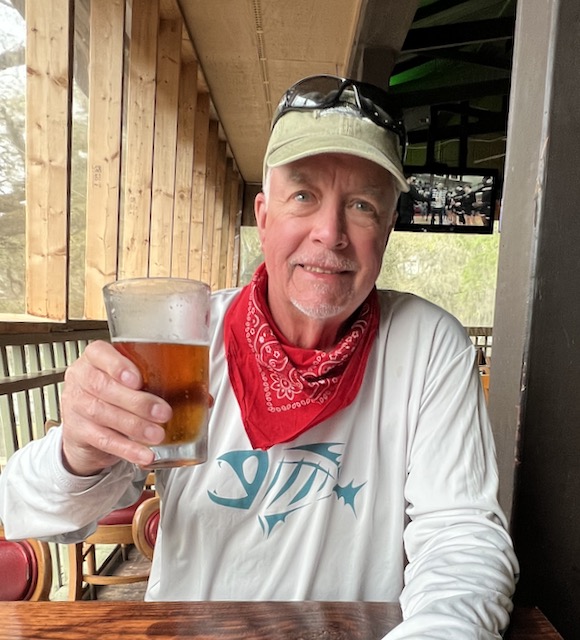
February 23, 2024. High winds were forecasted for the day, so Captain Jim Pruitt suggested we fish another stretch of the St. John’s River, which would offer more protection than an inland lake.
We met Captain Jim at Lemon Bluff Park. There are two parking areas here, one affording perhaps a dozen parking spots, and a larger parking area. The first parking area was filled with a group of guys participating in a local bass tournament. We put in at the larger parking area. The sun was rising in the background.
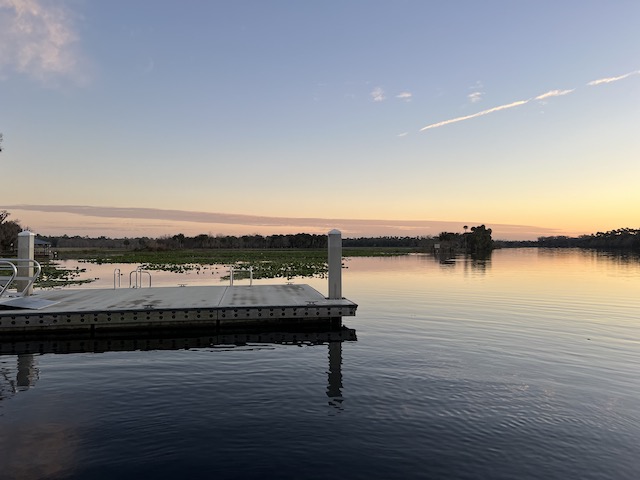
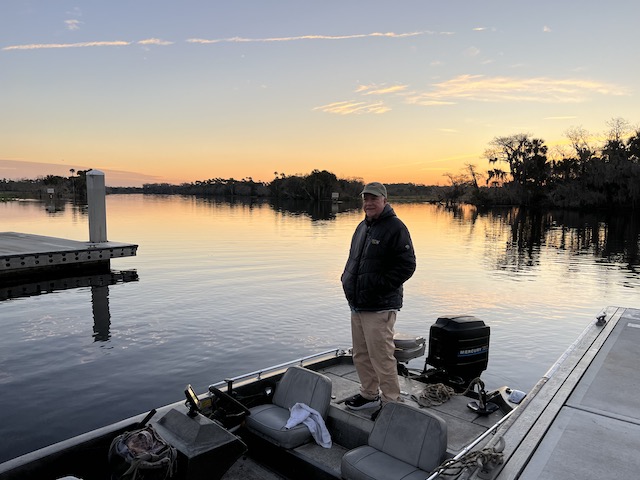
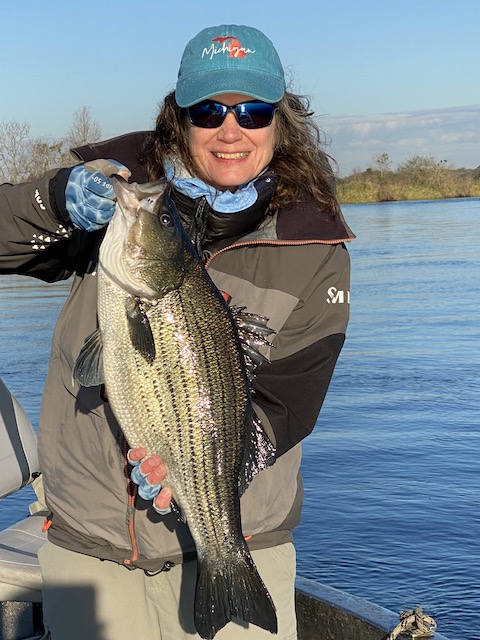
We’d only been fishing for a half hour when a fish took my shiner for a short run and fought really hard. I set the hook, reeled and reeled and thought perhaps I had a huge bass on, yet but the fish didn’t try to come out of the water like bass often do. Moments later, Captain Jim took this great photo of me with my first ever striper, which was soon back in the water like all of our other catches.
We thought we had landed on a honey hole, but it was several hours before we caught another fish, giving me plenty of time to photograph birds.
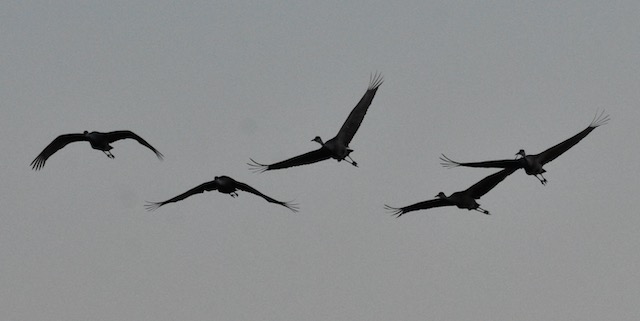
This flock of sandhill cranes flew over early in the morning, and after they flew over, I watched a great egret fly from the bank of the river out to the middle of the river, try to grab a minnow, and fly back to shore again. It did that several times…and seemed to expend a lot of energy in the process.


I’ve been asked by more than one bass guide why I take numerous photos of the same bird. And the answer is two-fold: 1) I am always searching for a better photo of just about anything and 2) I love the motion of birds in flight–the way their wings can bend and fold better than any airplane wing humans have designed.
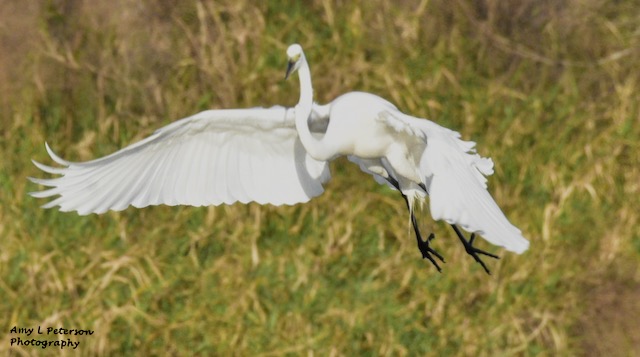
The great egret flew back and forth and tried at least a half dozen times and I saw it nab two minnows. It ate the minnow back at show, rested for a moment, then went back out a few more times to try again.
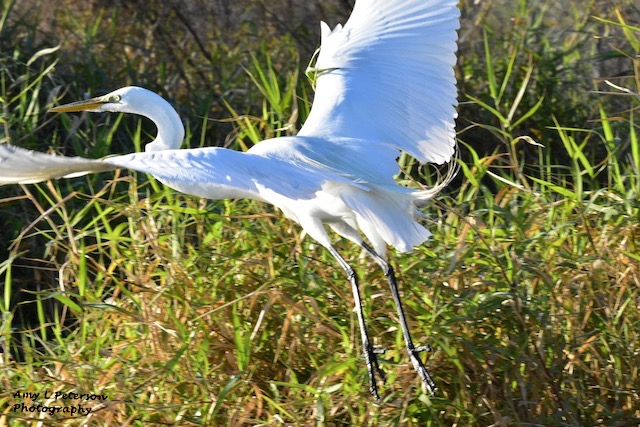
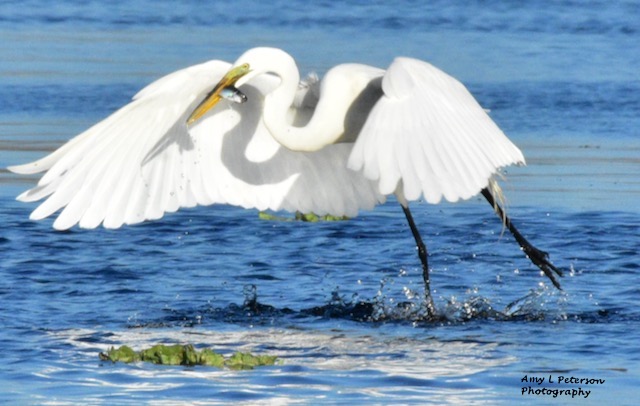
This is my favorite photo of a great egret due to the shadow of the bird in its own wings, and the fact that the shadow shows the fish in its beak and water droplets. What’s less than perfect about it is the fact that the shadow is more in focus than the bird itself. Hence, why I’ll keep shooting more photos of great egrets.

At 9:44 Mark caught this bass. Again, we thought maybe we were into the bass. But again, I had time to shoot more bird photos.
As another example of why I shoot numerous photos of the same bird–after we’d pulled up anchor and moved to a new location, I saw this feathery lump of something on the shore in the distance. I thought at first it was a fawn. But then it lifted its head up and I saw it was an American bittern. The third photo turned out to be the best.
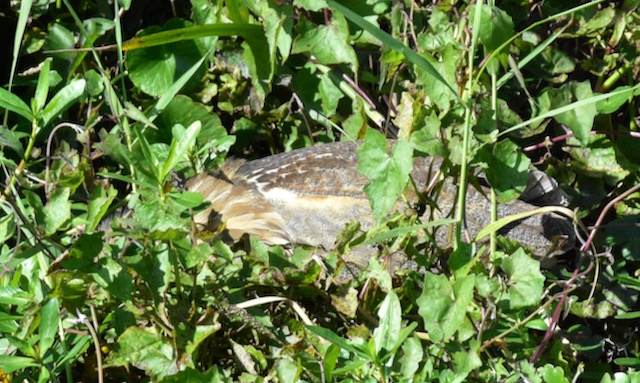
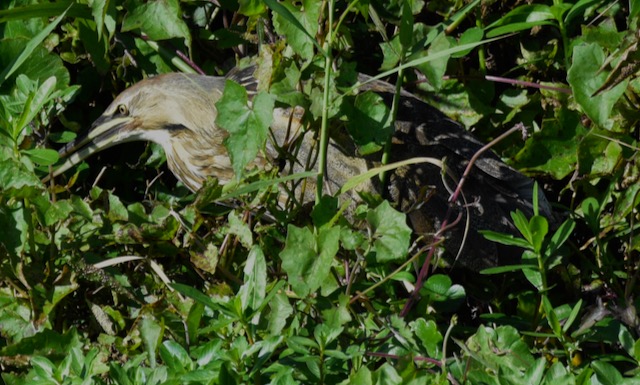

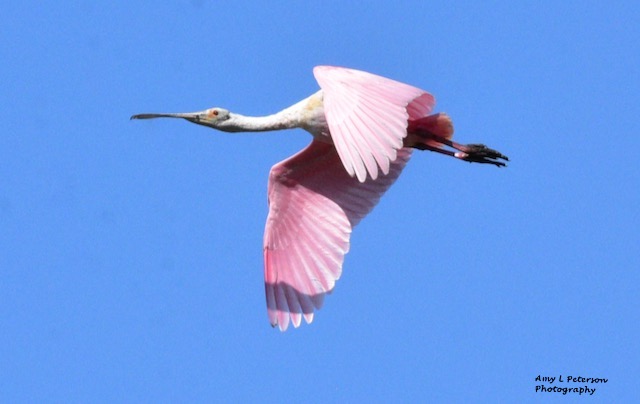

As with the other birds I shot this day, I took several photos of a roseate spoonbill. The ones above are more pink in color, but the one below shows the spoonbill shape better. So will I shoot more spoonbills if I see them in the future? Yes.



We fished several other spots, some of which were windier than others, some of which were prettier than others, most of which did not produce fish.
Over the course of the afternoon, the sky got cloudier and cloudier. Some say fish bite before a storm. The fish here did not.
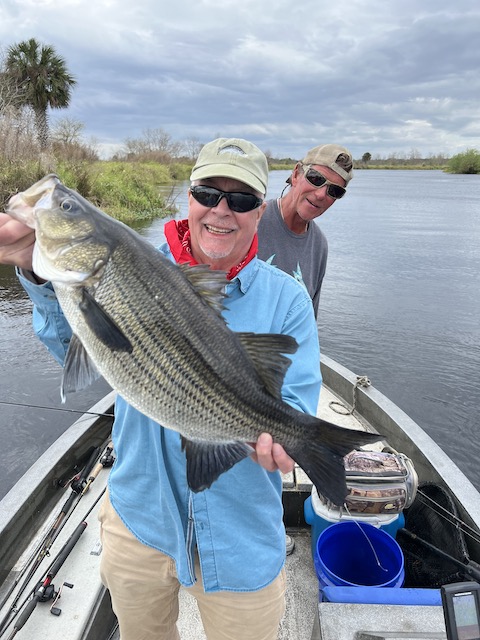
At 2:15 Mark caught this striper, which would be the biggest striper of the trip. This is one of my favorite photos because it’s colorful, Mark is happy, and Captain Jim is in the background.
This was, however, only the third fish caught all day.
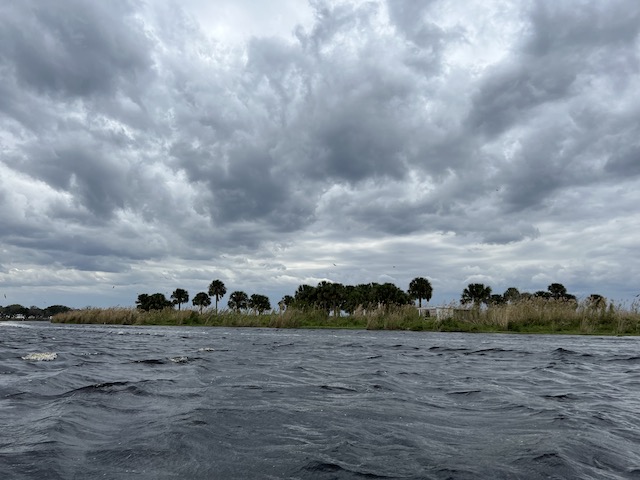
By late afternoon I began to question whether Mark would make it through the day without needing to use one of Captain Jim’s spare rain ponchos. (See, in spite of having amazing rain gear, Mark had tempted fate by leaving his rain gear in the truck). Luckily, the clouds passed by without rain, the sun popped out again, and we continued to catch nothing. The day’s fishing would end with two stripers and one largemouth bass.
